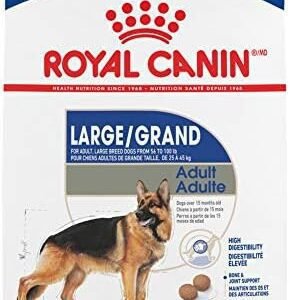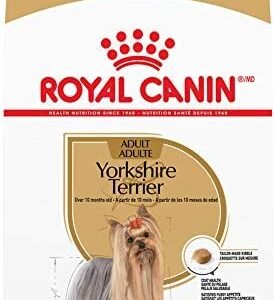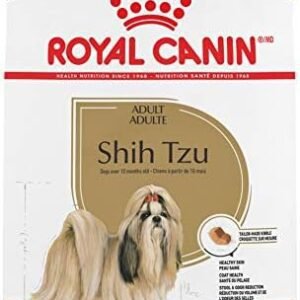Introduction
Have you ever wondered if your canine companion can relish the delightful taste of shrimp? As dog owners, we often find ourselves pondering the possibilities of sharing our favorite foods with our furry friends. Shrimp, with its succulent texture and savory flavor, is undoubtedly a delicacy enjoyed by many around the world. But can your loyal four-legged companion partake in this delectable treat?

In this comprehensive blog post, we embark on a culinary journey through the world of canine nutrition to explore the question: Can dogs eat shrimp? Beyond a simple yes or no, we will delve into the intricate details surrounding the consumption of shrimp by dogs. We’ll discuss the benefits and potential drawbacks, helping you make an informed decision about whether to include shrimp in your dog’s diet.
Our cherished canine friends bring immense joy to our lives, and their well-being is of paramount importance. Understanding what they can and cannot eat is crucial to ensuring their health and happiness. So, let’s dive into the realm of doggy dining and unravel the mysteries surrounding shrimp as a potential addition to your pet’s menu.
Table of Contents
The Curiosity of Canine Cuisine
Dogs are not just our faithful companions; they are cherished members of our families. We share our homes, our love, and sometimes even our meals with them. It’s only natural to wonder about the culinary preferences of our furry friends. What can they enjoy from our human-centric menu, and what should we avoid serving them?
The world of canine nutrition is multifaceted, with some human foods being safe and even beneficial for dogs, while others can be harmful or toxic. Shrimp, a seafood delicacy enjoyed by humans worldwide, presents a unique case. Its distinctive taste and versatility in various culinary creations make it a tantalizing option for pet owners who want to pamper their dogs with a special treat.
However, the decision to introduce shrimp into your dog’s diet should not be taken lightly. It requires careful consideration of various factors, including your dog’s individual health, dietary restrictions, and potential allergies. As responsible pet owners, we must prioritize our dogs’ well-being and ensure that any treat we offer aligns with their nutritional needs.
Nutritional Benefits of Shrimp for Dogs
Now that we have a clear picture of shrimp’s nutritional content, let’s explore the potential benefits it offers to our canine companions:
| Nutrient | Amount per 100 g |
|---|---|
| Calories | 99 kcal |
| Fat | 0.3 g |
| – Saturated fat | 0.1 g |
| – Polyunsaturated fat | 0.1 g |
| – Monounsaturated fat | 0.1 g |
| Cholesterol | 189 mg |
| Sodium | 111 mg |
| Potassium | 259 mg |
| Carbohydrate | 0.2 g |
| Protein | 24 g |
| Vitamin A | 3 mcg |
| Vitamin C | 2 mg |
| Vitamin D | 0 mcg |
| Calcium | 64 mg |
| Iron | 2.6 mg |
- Protein: Shrimp is a fantastic source of high-quality protein, with 18 grams per 3-ounce serving. Protein is crucial for dogs as it supports muscle development, tissue repair, and overall growth.
- Omega-3 Fatty Acids: Shrimp contains omega-3 fatty acids, specifically EPA and DHA. These essential fatty acids play a vital role in maintaining a dog’s healthy skin, coat, and joints. They also have anti-inflammatory properties.
- Vitamins and Minerals: Shrimp is rich in several essential vitamins and minerals. It provides Vitamin B12, which is important for nerve function and red blood cell production. Additionally, it contains niacin (Vitamin B3), which aids in digestion and energy metabolism. Shrimp also contributes vitamin E, which acts as an antioxidant. Minerals like selenium, zinc, and copper are essential for various bodily functions.
Drawbacks of Feeding Shrimp to Dogs
While shrimp offers various nutritional benefits, there are some potential drawbacks to consider:
- Cholesterol Content: Shrimp contains a relatively high amount of cholesterol (129 mg per 3-ounce serving). While dietary cholesterol may not impact dogs the same way it does humans, it’s essential to be mindful, especially if your dog has specific dietary restrictions or health concerns.
- Allergies: Just like humans, some dogs may be allergic to seafood, including shrimp. Allergic reactions can manifest as skin irritations, digestive issues, or respiratory problems. If you’re introducing shrimp for the first time, monitor your dog closely for any adverse reactions.
- Sodium Content: Shrimp contains sodium (230 mg per 3-ounce serving). While dogs require sodium for various bodily functions, excessive sodium intake can lead to issues like high blood pressure. Moderation is key when incorporating shrimp into your dog’s diet.
- Digestive Sensitivity: Some dogs may have sensitive stomachs, and the introduction of new foods can disrupt their digestive systems. If your dog experiences diarrhea, vomiting, or other digestive issues after consuming shrimp, it may not agree with their stomach.
A Complementary Treat
It’s important to emphasize that while shrimp can be a delightful addition to your dog’s diet, it should only complement their primary meals. Shrimp should never replace a well-balanced dog food designed to meet all their nutritional needs.
In the following sections of this article, we will delve deeper into specific considerations when feeding shrimp to your dog. We’ll explore portion sizes, cooking methods, potential allergies, and what to do if your dog ingests parts of a shrimp that may not be edible or safe for them. By the end of our journey, you’ll have a comprehensive understanding of how to make shrimp a safe and enjoyable treat for your beloved canine companion.
How Much Shrimp Can a Dog Eat?
Now that we’ve established that shrimp can be included in your dog’s diet, the next crucial question arises: how much shrimp is safe for your furry friend? The key to offering shrimp to your dog lies in moderation. While it can be a delightful treat, it should not become a substantial portion of your dog’s daily calorie intake.
Moderation Is Key
Treats, including shrimp, should only constitute a small percentage of your dog’s daily caloric intake. An excellent rule of thumb is that treats should make up no more than 10% of your dog’s daily diet. This ensures that your dog receives the essential nutrients they need from their primary dog food.
Start Small and Observe
When introducing shrimp to your dog’s diet, it’s advisable to start with a small piece. This cautious approach allows you to gauge how your dog’s digestive system reacts to this new addition. Like humans, some dogs may have sensitivities or allergies to seafood, and a gradual introduction helps identify any adverse reactions.
Proper Preparation Is Key
Before offering shrimp to your dog, it’s crucial to prepare it correctly to make it safe and easily digestible. Here’s how you should prepare shrimp for your canine companion:
- Cooked and Unseasoned: Shrimp should be thoroughly cooked, preferably boiled or steamed, and served without any seasoning. Avoid adding salt, spices, garlic, onions, or any other flavorings, as these can be harmful to dogs.
- Peeling and Deveining: Remove the shell and tail of the shrimp, as these parts can be difficult for dogs to digest. Additionally, devein the shrimp to eliminate the intestinal tract, which can harbor bacteria.
- Cut into Small Pieces: After cooking and preparing the shrimp, cut it into small, manageable pieces. This ensures that your dog can safely chew and swallow without any risk of choking.
Consider Your Dog’s Size and Breed
The appropriate serving size of shrimp for your dog can vary depending on their size and breed. Larger dogs may be able to tolerate more shrimp than smaller ones. As a general guideline:
- Small Breeds: Small dogs, such as Chihuahuas or Dachshunds, should have very modest servings of shrimp. One or two small pieces may suffice as an occasional treat.
- Medium Breeds: Dogs of medium size, like Bulldogs or Beagles, can enjoy slightly larger portions, but still in moderation. Two to three small pieces may be appropriate.
- Large Breeds:Larger dogs, such as Labradors or Golden Retrievers, can generally consume a bit more shrimp. Three to four small pieces should suffice.
Serving Sizes Based on Weight
For a more precise serving size based on your dog’s weight, you can use the following recommendations:
- Dogs under 10 pounds: Limit shrimp to one or two small pieces as an occasional treat.
- Dogs weighing 10-30 pounds: Offer up to three small pieces as a treat.
- Dogs weighing 30-60 pounds: Provide four to five small pieces as a treat.
- Dogs over 60 pounds: Larger dogs can typically enjoy five to six small pieces.
Remember that these serving sizes are approximate, and individual variations may occur. Always prioritize your dog’s well-being by monitoring their response to shrimp consumption and adjusting accordingly.
What Are the Risks of Feeding Shrimp to Dogs?
While shrimp can offer some nutritional benefits and be a delectable treat for your dog, it’s essential to be aware of the potential risks associated with introducing seafood into their diet. Let’s delve into some of the concerns and risks you should consider when feeding shrimp to your furry friend.
Food Allergies in Dogs
Food allergies are not uncommon in dogs, and seafood, including shrimp, is a known allergen. Just as some humans are allergic to shellfish, some dogs may develop allergies to shrimp. These allergies can manifest as itching, skin irritations, hives, or gastrointestinal distress.
Short-Term Signs of Food Intolerance
Food intolerance, while not as severe as allergies, can lead to short-term digestive upset. Dogs may experience symptoms such as diarrhea, vomiting, excessive gas, or abdominal discomfort after consuming shrimp. It’s crucial to be attentive to these signs, especially if you’re introducing shrimp to your dog for the first time.
Potential Hazards in Shrimp
Certain components of shrimp can pose hazards to dogs:
- Cholesterol: As mentioned earlier, shrimp contains a significant amount of cholesterol. While dogs handle dietary cholesterol differently than humans, excessive consumption may contribute to obesity or other health issues in some cases.
- Sodium: Shrimp also contains sodium, which is necessary for various bodily functions. However, too much sodium can lead to high blood pressure and other health problems. If your dog already has underlying health conditions, such as heart disease, it’s essential to monitor their sodium intake.
Allergic Reactions
Allergic reactions can range from mild to severe and may include:
- Skin Irritations: Dogs may develop itching, redness, or hives on their skin.
- Gastrointestinal Distress: Diarrhea, vomiting, and excessive gas can occur.
- Respiratory Issues: In severe cases, dogs may experience difficulty breathing or coughing.
If you observe any of these signs after your dog consumes shrimp, it’s essential to seek immediate veterinary attention. Allergic reactions can escalate rapidly, and prompt medical care is crucial to ensure your dog’s well-being.
Specific Issues with Shrimp Consumption
Beyond allergies and potential digestive problems, there are specific issues related to shrimp consumption that you should be aware of:
- Bones and Shells: While shrimp shells are typically removed before serving to dogs, there may still be tiny fragments or sharp parts that can pose a choking hazard or damage the gastrointestinal tract. Always ensure that shrimp is properly prepared, including removing shells and tails.
- Seasonings and Spices: Shrimp should be cooked and served plain, without any seasoning or spices. Ingredients like garlic, onions, or excessive salt can be toxic to dogs. Keep shrimp preparation simple and free from these potentially harmful additives.
Signs and Symptoms of Adverse Reactions
It’s crucial to recognize the signs and symptoms of adverse reactions in dogs after consuming shrimp. These may include:
- Excessive itching or scratching
- Hives or rash on the skin
- Swelling, especially around the face, lips, or eyes
- Diarrhea or vomiting
- Abdominal discomfort or bloating
- Difficulty breathing or coughing
- Lethargy or weakness
If you observe any of these signs in your dog, consult your veterinarian immediately. Allergic reactions and adverse effects can vary in severity, and professional guidance is essential to determine the appropriate course of action.
In the upcoming sections, we will provide guidance on how to make shrimp a safe and enjoyable treat for your dog while minimizing the risks associated with its consumption. By following these precautions, you can ensure that your canine companion can savor the taste of shrimp without compromising their health and well-being.
How to Feed Shrimp to Your Dog and Make It More Enjoyable for Them
As you’ve learned about the potential benefits and risks of feeding shrimp to your dog, you might be eager to explore how you can incorporate this seafood into your furry friend’s diet while ensuring it’s a delightful experience. In this section, we’ll delve into various ways to feed shrimp to your dog and make it an enjoyable addition to their meals.
Feeding Shrimp to Your Dog: The Options
There are several ways to introduce shrimp into your dog’s diet:
- Fresh or Frozen Treat: Shrimp can be served fresh or frozen, offering your dog a cool and refreshing treat, especially on hot days. You can simply thaw frozen shrimp and offer them as a standalone treat.
- Food Topper: Shrimp can be used as a food topper, enhancing the flavor and aroma of your dog’s regular meals. Simply chop the cooked shrimp into small pieces and sprinkle them over your dog’s kibble or wet food.
- Mixer in Meals: You can also mix shrimp into your dog’s meals to create a balanced and nutritious dish. Combining shrimp with other dog-friendly ingredients like rice, vegetables, or lean meats can make for a delicious homemade meal.
- Homemade Treats: Get creative in the kitchen and use shrimp to make homemade treats or snacks for your dog. These treats can be a special reward during training or just a way to pamper your pet.
Enhancing Your Dog’s Meals with Shrimp
Making your dog’s meals more enjoyable and flavorful with shrimp can be a rewarding experience for both you and your four-legged companion. Here are some creative methods for enhancing your dog’s food with shrimp:
- Shrimp and Rice: Cooked shrimp can be mixed with plain cooked rice for a simple yet satisfying meal. This combination provides a balance of protein and carbohydrates.
- Shrimp and Vegetable Medley: Steam or boil shrimp and mix them with dog-friendly vegetables like carrots, peas, or green beans. This colorful medley not only adds flavor but also provides essential nutrients.
- Shrimp Broth: After cooking shrimp, save the broth to use as a tasty topping for your dog’s meals. Pouring a small amount of shrimp broth over their food can entice even the pickiest eaters.
- Frozen Shrimp Popsicles: Create frozen shrimp popsicles by blending cooked shrimp with a bit of water and freezing the mixture in ice cube trays. These icy treats can be a great way to keep your dog cool on hot days.
- Homemade Shrimp Treats: Consider making homemade shrimp treats using dog-friendly ingredients like oat flour, eggs, and shrimp. There are numerous recipes available online for shrimp-based dog treats that your pup will adore.
Homemade Shrimp Treat Recipes
Here are a couple of simple shrimp treat recipes for your dog:
Shrimp and Oat Biscuits:
Ingredients:
- 1 cup oat flour
- 1/2 cup cooked and chopped shrimp
- 1 egg
Instructions:
- Preheat your oven to 350°F (175°C).
- In a mixing bowl, combine the oat flour, chopped shrimp, and egg.
- Mix the ingredients until a dough forms.
- Roll out the dough on a floured surface and use cookie cutters to create fun shapes.
- Place the shaped treats on a baking sheet and bake for 15-20 minutes or until they are golden brown.
- Allow the treats to cool completely before serving them to your dog.
Shrimp and Sweet Potato Bites:
Ingredients:
- 1 cup mashed sweet potato
- 1/2 cup cooked and chopped shrimp
- 1/4 cup oat flour
Instructions:
- Preheat your oven to 350°F (175°C).
- In a mixing bowl, combine the mashed sweet potato, chopped shrimp, and oat flour.
- Mix until the ingredients form a dough.
- Roll the dough into bite-sized balls and place them on a baking sheet.
- Bake for 15-20 minutes or until they are firm and slightly crispy.
- Allow the bites to cool before serving them to your dog.
Remember to monitor your dog’s overall diet and ensure that shrimp treats or additions to their meals do not exceed the recommended 10% of their daily caloric intake from treats. With these creative and tasty ideas, you can make shrimp a delightful and nutritious addition to your dog’s dining experience.
FAQs About Can Dogs Eat Shrimp

1. Can All Dogs Safely Eat Shrimp?
While many dogs can safely consume shrimp without any issues, it’s essential to be aware of potential allergies or sensitivities. Some dogs may have adverse reactions to seafood, so it’s crucial to introduce shrimp cautiously and monitor your dog’s response.
2. Are There Any Benefits to Feeding Shrimp to Dogs?
Yes, shrimp can offer several nutritional benefits to dogs. It’s a good source of protein, vitamins, and minerals, including vitamin B12, iodine, and phosphorus. However, it should complement your dog’s primary diet rather than replace it.
3. Can Dogs Eat Shrimp Shells and Tails?
No, it’s best to remove shrimp shells and tails before feeding them to your dog. These parts can be challenging for dogs to digest and may pose a choking hazard. Always serve shrimp in a prepared, shell-free form.
4. Are There Any Seasonings or Spices That Are Safe for Dogs with Shrimp?
No, seasonings and spices should be avoided when serving shrimp to dogs. Ingredients like garlic, onions, salt, or excessive spices can be toxic to dogs. Keep shrimp preparation simple and unseasoned.
5. Can Shrimp Be Given to Puppies?
Puppies can eat shrimp in moderation once they are weaned and their digestive systems are more developed. However, it’s essential to offer tiny portions and monitor their response, as puppies may be more sensitive to new foods.
6. What Should I Do If My Dog Has an Allergic Reaction to Shrimp?
If you suspect your dog is having an allergic reaction to shrimp, seek immediate veterinary attention. Allergic reactions can range from mild to severe, and professional care is crucial to ensure your dog’s well-being.
7. Can Shrimp Be Given to Dogs with Preexisting Health Conditions?
If your dog has preexisting health conditions, consult your veterinarian before adding shrimp to their diet. Conditions such as heart disease or allergies may require dietary restrictions, and shrimp consumption should be discussed with a healthcare professional.
8. Are There Any Alternatives to Shrimp for Dogs?
Yes, there are several seafood alternatives that dogs can safely enjoy, such as cooked salmon or trout. Always ensure that these alternatives are prepared without any harmful additives or seasonings.
9. How Should I Store Shrimp for My Dog?
If you’re storing shrimp for your dog, keep it in the refrigerator at a temperature below 40°F (4°C). If you plan to keep it for an extended period, freezing is a suitable option. Proper storage helps prevent bacterial growth and ensures the shrimp remains safe for consumption.
10. Can Shrimp Be Used in Homemade Dog Treats?
Yes, shrimp can be incorporated into homemade dog treats with dog-friendly ingredients like oat flour and eggs. Many recipes are available online for shrimp-based dog treats that your pet can enjoy as an occasional reward.
Conclusion
In conclusion, we’ve explored the intriguing question of whether dogs can eat shrimp and uncovered valuable insights into this seafood delicacy for our canine companions. As you can see, dogs can indeed enjoy shrimp, but moderation and responsible feeding practices are key.
Shrimp can be a tasty and nutritious occasional treat for your furry friend. It offers a good source of protein, vitamins, and minerals, making it a tempting addition to their diet. However, it’s crucial to remain vigilant about potential risks, such as allergies or adverse reactions. Always introduce shrimp gradually and monitor your dog’s response closely.
























